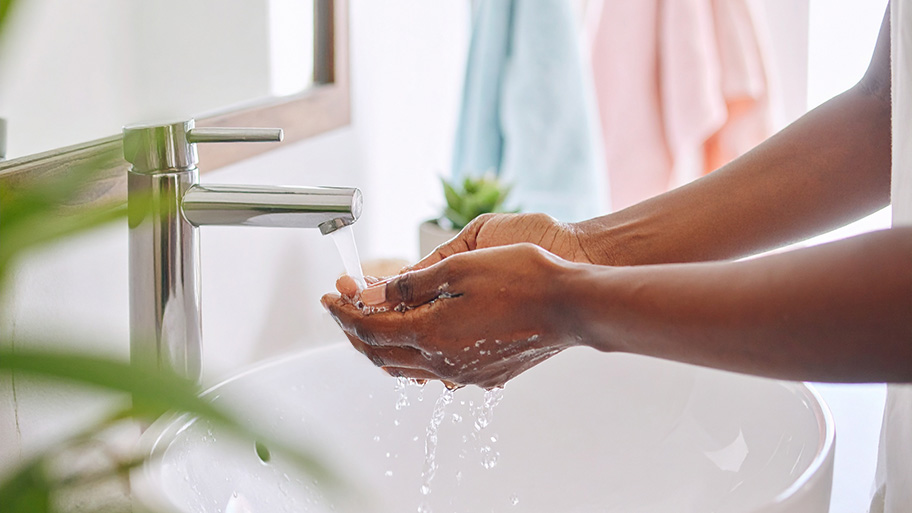
Worried about water leaking around your toilet? You may have a faulty toilet flange. Learn more about the cost to replace a toilet flange in our guide.
Lawnmower take your sewer pipe cap for a joy ride? Check out these tips to replace it and keep your sewage contained.


Nothing’s worse than when you’re mowing your lawn and you hear an unexpected noise only to find out that you went too close to your sewer pipe cap, and now the sewer cleanout cap is broken.
A sewer pipe cap, also known as a sewer cleanout plug, is a removable cap that gives you or a licensed plumber access to your sewer line when it needs maintenance, like during a sewer backup. Before you prepare to replace your cap, there are a few things you need to know to make the process easier and safer.
When taking on this project, expect questions only a pro can answer. With our network of local pros, you'll get the job done and your questions answered—without the hassle and stress of doing it yourself.
To get a replacement plug, the first step is to make sure that you know what type of plug you need. So, start by measuring its size, which can range from one-half to four inches in length, because this isn’t something you want to eyeball. We recommend using a measuring tape to accurately assess the dimensions of the plug.
Depending on how much of the sewer cap is left, you can identify what kind of material it’s made of before you purchase a new one. Most sewer caps are made from metal, ABS, or PVC material. In most cases, the sewer pipe cap is made from the same material as the sewer pipe itself. So, cross-check the pipe material to see what you need.

Some sewer cleanout caps are a cinch to remove—others, not so much. Over time, it’s common for some caps to become rusted and fused to the threads, making it a headache to replace. While this happens more frequently with cast-iron fittings, it’s also possible if you have a plastic one.
So, if your sewer cleanout plug is stuck, here are a few methods you can use to unscrew it.
Sometimes, the only thing required is to apply a little extra strength to get the cap to come off. But be careful: If you feel like it’s taking too much force to remove it, stop and try something else.
Heat has always been an effective way to loosen up any stubborn material. For cast-iron fittings, use a propane torch to loosen the threads. If you have a plastic-fitting, a torch might melt it, so use a hairdryer instead. If you decide to use heat, use caution so you don’t burn yourself.
If rust is causing the threads and cap to be stuck together, you can also apply this type of lubricant to loosen the threads. However, never apply lubricant to a hot cleanout cap or pipe because lubricant is a flammable substance.
Just a few taps from a framing hammer or sledgehammer should make it easier for you to unscrew the sewer cleanout cap.
By placing a wrench on the plug’s nut and turning it counterclockwise, you might be able to loosen it up enough for the cap to come off.
If none of these methods help you remove your cap, then you might need to cut out the fitting to replace it. But if you’re not comfortable cutting it yourself, contact a sewer service to do it for you.
It’s also worth noting that your threads won’t hold a new sewer pipe cap if the previous one was stuck. So, you might need to use a rubber coupling to get the threads to seal correctly.
We get it, the cap broke, but as long as your sewer pipes are still functioning, then there’s really no rush, right? Unfortunately, if you discover that your cap is no longer protecting your sewer cleanout, then you need to grab the necessary materials and fix it immediately.
If there’s any blockage in your sewage system, you can potentially release pressure buildup and sewage water onto your property by removing the cleanout cap. But this depends on whether there’s any blockage present and how your cap broke. Just exercise caution when completing this task.
From average costs to expert advice, get all the answers you need to get your job done.

Worried about water leaking around your toilet? You may have a faulty toilet flange. Learn more about the cost to replace a toilet flange in our guide.

Here's a look at how much you can expect to pay to replumb your mobile home with new pipes that meet all local code requirements and environmental regulations.

Discover the average water tank cost, including installation, maintenance, and tips to save. Get transparent pricing and expert advice for your home project.

Plumbing a bathroom starts with knowing the steps for a successful DIY project. Follow this guide to learn how to plumb a bathroom yourself.
.jpg?impolicy=leadImage)
Proactive plumbing maintenance can save you thousands and protect your pipes and appliances from unnecessary wear and tear—but how often you need to schedule plumbing maintenance depends on a few factors.

Read these 9 tips for inspiration on how to reduce your toilet’s water usage